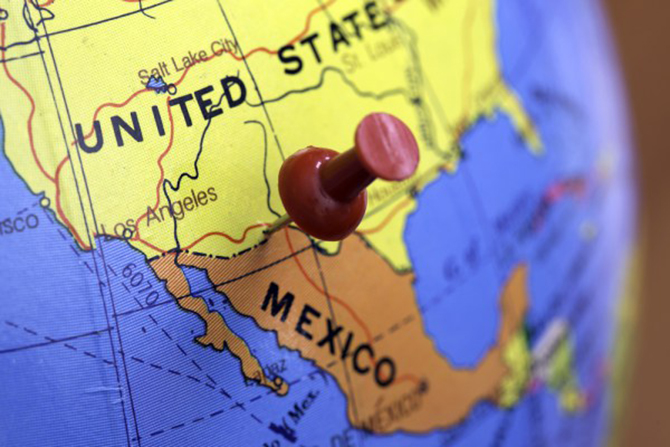Non-essential Travel Restricted at the U.S.-Mexico Border

The long lines at the land Ports of Entry at the U.S.-Mexico border are now almost empty. The Trump administration has restricted all non-essential travel across its border with Mexico. The measure was taken to avoid the spread of Coronavirus and will be in place for 30 days and may be extended, if needed.
“Both our countries know the importance of working together to limit the spread of the virus and to ensure the commerce that supports both our economies keeps flowing,” Secretary of State Michael R. Pompeo said after announcing the agreement with Mexico.
Essential travel includes U.S. citizens or permanent residents returning to the U.S., people traveling for medical purposes, in the case of receiving treatment in the U.S., people traveling to attend educational institutions, and those returning to the U.S. in the agriculture and farming industries.
Also, anyone traveling as part of an emergency response team, government officials, or emergency responders, and those who work in cross-border trade, such as truck drivers moving cargo between the U.S. and Mexico will be allowed to enter the country via Mexico.
Since March 21st. people trying to cross the border via a land port must show proof of U.S. Citizenship or legal residency in the U.S. Also, an agent might take the person’s temperature before letting this person to reach the Customs and Border Protection (CBP) booth.
CBP advised travelers they cannot transport a Mexican citizen while crossing the border.
A joint statement said the “U.S. and Mexican governments further recognize critical services such as food, fuel, healthcare and life-saving medicines must reach people on both sides of the border every day. Essential travel must therefore continue unimpeded during this time.”
Non-essential reasons include sightseeing, recreation, gambling, and cultural events.
Additionally, CBP will no longer detain illegal immigrants in our holding facilities and will immediately return these aliens to the country they entered from -Canada or Mexico. Where such a return is not possible, CBP will return these aliens to their country of origin.
The U.S.-Mexico border is very dynamic. Every day, more than US$1.6 billion in goods and services flow across the border, according to the U.S. Chamber of Commerce. Moreover, roughly half a million legal workers, students, shoppers and tourists with visas do it, too.
“As a community built on trade, we understand better than anyone that supply chains are the lifeline that keeps the economy moving. This deal allows for trade and commerce to continue while reducing public exposure to the virus,” said in a statement Jon Barela, CEO of The Borderplex Alliance.
Furthermore, economists said this situation will have a negative impact on retail because Mexicans account up to 14% of the sales in border cities.
“The recent turn of events implies that cross-border retail sales will head down toward the 8 percent range, or maybe even lower. Before the Covid-19 outbreak, at least US$1.2 billion in retail sales exports were anticipated for El Paso in 2020,” explained economist Dr. Tomas Fullerton. “That figure could fall to US$960 million or less. That decline will combine with other domestic income and employment losses to cause a greater volume of El Paso business bankruptcies.”
Even though the restriction has been effective for a few days, retailers have reported low sales because Mexican shoppers are not being allow to cross the border.
Source: BORDER-NOW Number 63





